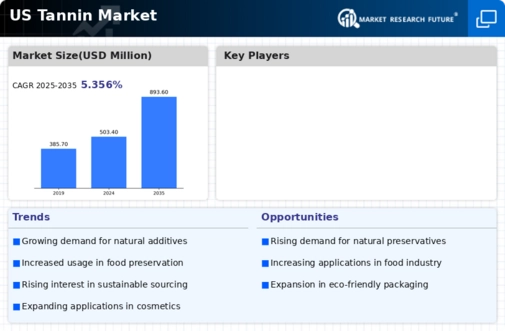The US Tannin Market is characterized by a diverse landscape where numerous players engage in the production and distribution of tannins. This market is influenced by growing demand in various industries such as food and beverages, pharmaceuticals, and leather processing. Tannins are naturally occurring polyphenolic compounds known for their ability to bind and precipitate proteins. The competitive landscape is marked by advancements in extraction technologies, product innovation, and strategic partnerships among companies seeking to enhance their market positions. Companies are increasingly focusing on sustainability and eco-friendly practices as consumers and industries demand more environmentally responsible options.
Analyzing the market dynamics reveals significant competition and the necessity for companies to differentiate their offerings to capture and retain market share.W. R. Grace and Co. has established itself as a formidable player in the US Tannin Market due to its expansive product portfolio and commitment to quality. The company focuses on providing high-performance solutions across various sectors, including leather, food, and beverages. Its strengths lie in its advanced manufacturing capabilities, research and development initiatives, and extensive distribution network that ensures a steady supply of tannin products to its customers. W. R.
Grace and Co. prioritizes innovation, which enables it to meet the evolving needs of the market. Moreover, the company has built a reputation for reliability and expertise, fostering long-term relationships with clients and stakeholders in the United States.Henningsen Foods, while primarily known for its operations in the food sector, also plays a significant role in the US Tannin Market through its offerings that include natural tannin extracts used in various culinary applications. The company's key products are tailored for the food and beverage industry, providing solutions aimed at improving flavor, texture, and preservation.
Henningsen Foods has carved out a niche presence due to its focus on sourcing high-quality raw materials and maintaining rigorous quality control processes. Strengths include a customer-centric approach and adaptability, allowing it to respond effectively to market demands. Additionally, the company has pursued strategic partnerships and collaborations within the sector, positioning itself favorably for growth while also exploring acquisitions that enhance its competitive edge in the US Tannin Market.











Leave a Comment